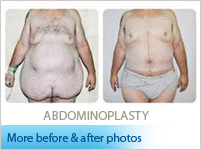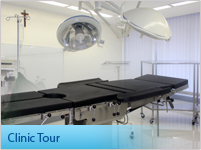What is Mentoplasty?
Mentoplasty, also known as Chin Augmentation, is a surgical procedure
done to enhance or reshape the chin of a person. There are two ways
to perform it--either by using implants or reshaping the bones. The
main goal of Chin Augmentation is to provide facial balance and to create
proportion among the features of a person. Most of the time, Chin Augmentation
is recommended along with Nose Surgery or Rhinoplasty. Some of the common
issues that chin augmentation deals with are weak chins and double chins.
I. Mentoplasty with Implants
The common implants used in Mentoplasty are silicone implants. But first
of all, general anesthesia is administered to the patient to numb the
area that will be operated, then an incision will be made on the inside
of the mouth or on the outside of the chin. In front of the chin bone
and below the muscles, a pocket will be created to accommodate the silicone
implants. These implants will be secured with sutures or screws. The
incision will also be sutured.
II. Mentoplasty with Bone Reshaping
In order to perform mentoplasty and to enhance the shape of the chin,
some bones need to be reshaped or removed. The surgical procedure starts
with the general anesthesia being administered, then incisions on the
lower gum, and cutting through the jaw bone to reshape the chin. After
the procedure, the jaw bone will be wired in place, the incision sutured
and bandaged.
What to expect after Mentoplasty?
After the surgical procedure of Mentoplasty, the wound is usually bandaged
for two or three days. For the first few days, patients might feel some
tenderness on the chin area but it will disappear. There are also some
medications that can be prescribed to ease the discomforts after surgery.
Soft diet and lots of liquid are ideal for patients who just went through
Mentoplasty, as they might initially find chewing a little bit more
challenging. There could also be some tensed or stretched sensations
on the chin area while eating, but these will be gone after a weak.
Moreover, the swelling and discomforts usually disappear within six
weeks.




